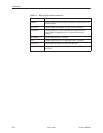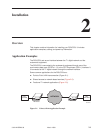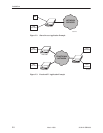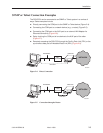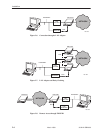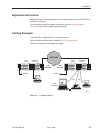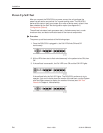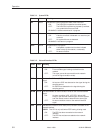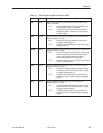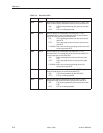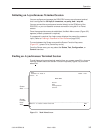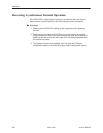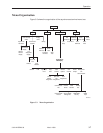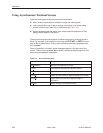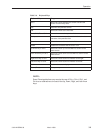
Operation
3-2
3162-A2-GB20-30
March 1999
Table 3-1. System LEDs
Name Color Meaning
OK Green Indicates the current operational state of the DSU/CSU.
ON:
The DSU/CSU is operational and has power.
OFF:
The DSU/CSU is performing a power-up self-test
or a system failure has occurred.
BLINKING:
A software download is in progress.
FAIL Yellow Indicates a system failure or a self-test.
ON:
A device error/fault is detected or a reset has just
occurred.
OFF:
No system failures are detected.
BLINKING
: A self-test is in progress.
TEST Yellow A system test is in progress.
ON:
A loopback or pattern test has been initiated
either locally, by the network, or externally.
OFF:
No tests are active.
Table 3-2. Network Interface LEDs
Name Color Meaning
SIG Green Monitors the signal being received from the network.
ON:
A recoverable signal is being received from the
network.
OFF:
The signal cannot be recovered from the network
(a Loss of Signal condition exists).
OOF Yellow Monitors Out Of Frame (OOF) conditions on the received network
signal.
ON
: At least one OOF was detected on the signal during the
sampling period.
OFF:
No OOFs were detected on the signal during the
sampling period.
ALRM Yellow Indicates whether an alarm condition exists on the received network
signal.
ON:
An alarm condition (LOS, LOF, EER, Yellow, AIS)
exists on the received network signal. Use the System
and Test Status screen to determine the alarm type.
OFF:
No alarm condition exists on the network interface
signal.
EER Yellow Indicates the Excessive Error Rate (EER) has been exceeded on the
network interface.
NOTE: This LED is only valid when ESF framing is being used.
ON:
The EER has been exceeded on the network
interface.
OFF:
The EER has not been exceeded on the network
interface.



